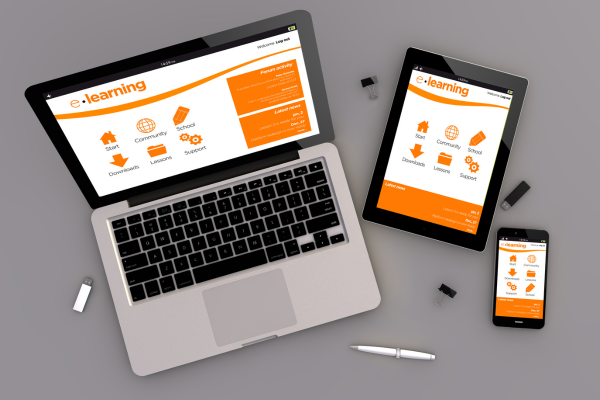How to Write Effective Proposals and Contracts as a Freelance Designer
As a freelance designer, writing effective proposals and contracts is essential for securing projects and ensuring clear, professional relationships with your clients. A well-crafted proposal can win you new business, while a comprehensive contract protects both you and your client. Here’s a detailed guide on how to write compelling proposals and solid contracts.
1. Understand the Client’s Needs
Before you start writing your proposal, take the time to understand your client’s needs and expectations. This ensures that your proposal is tailored to their specific project and demonstrates your understanding of their goals.
Tips:
- Have a detailed conversation with the client to gather all necessary information.
- Ask questions about their goals, target audience, budget, and timeline.
- Research the client’s industry and competitors to provide informed insights.
2. Structure Your Proposal
A well-structured proposal is easy to read and navigate. Organize your proposal into clear sections that cover all the necessary aspects of the project.
Essential Sections:
- Introduction: Briefly introduce yourself and your services.
- Project Overview: Summarize the client’s needs and project goals.
- Scope of Work: Detail the services you will provide, including deliverables and milestones.
- Timeline: Provide a realistic timeline for the project, including key deadlines.
- Budget: Outline the costs involved, including a breakdown of fees.
- Qualifications: Highlight your relevant experience and expertise.
- Portfolio: Include examples of similar projects you’ve completed.
- Terms and Conditions: Mention any important terms, such as payment schedules and revisions.
3. Write a Compelling Introduction
The introduction sets the tone for your proposal. Make it engaging and personal to capture the client’s interest.
Tips:
- Address the client by name to make it personal.
- Mention how you found out about the project and why you’re interested.
- Provide a brief overview of your skills and experience relevant to the project.
4. Define the Scope of Work
Clearly defining the scope of work helps to manage expectations and prevent scope creep. Be specific about what is included in the project and what is not.
Tips:
- Break down the project into tasks and deliverables.
- Specify the number of revisions included.
- Mention any additional costs for extra work outside the agreed scope.
5. Provide a Realistic Timeline
A realistic timeline shows that you understand the project’s requirements and can deliver on time. Be honest about your availability and capacity.
Tips:
- Include key milestones and deadlines.
- Allow some buffer time for revisions and unexpected delays.
- Discuss the timeline with the client to ensure it meets their expectations.
6. Outline the Budget
A clear and detailed budget helps to build trust and transparency. Break down the costs to show the client where their money will be spent.
Tips:
- Provide a total project cost and a detailed breakdown of fees.
- Mention payment terms, such as deposits and installment payments.
- Include any additional costs, such as travel expenses or materials.
7. Highlight Your Qualifications
Showcase your skills and experience to convince the client that you are the right person for the job.
Tips:
- Highlight relevant projects from your portfolio.
- Mention any awards, certifications, or notable clients.
- Provide testimonials from previous clients.
8. Include Terms and Conditions
Including terms and conditions protects both you and the client. Clearly outline the terms of the agreement to avoid misunderstandings.
Essential Terms:
- Payment Terms: Specify the payment schedule, methods, and late payment penalties.
- Revisions: Define the number of revisions included and the cost for additional revisions.
- Ownership Rights: Clarify the ownership of the final deliverables.
- Confidentiality: Include a confidentiality clause to protect sensitive information.
- Termination: Outline the terms under which either party can terminate the agreement.
9. Review and Proofread
Before sending your proposal, review and proofread it to ensure there are no errors or omissions. A polished and professional proposal reflects well on your attention to detail.
Tips:
- Use spell check and grammar check tools.
- Read the proposal aloud to catch any awkward phrasing.
- Ask a trusted colleague or friend to review it.
10. Follow Up
After submitting your proposal, follow up with the client to answer any questions and discuss the next steps.
Tips:
- Send a follow-up email a few days after submission.
- Be available for a call or meeting to discuss the proposal in detail.
- Show enthusiasm and readiness to start the project.
Writing Effective Contracts
Once your proposal is accepted, it’s time to draft a contract. A well-written contract formalizes the agreement and provides legal protection.
1. Use Clear and Simple Language
Your contract should be easy to understand. Avoid legal jargon and use clear, simple language.
Tips:
- Write in plain English and avoid complex sentences.
- Use bullet points and headings to organize information.
- Define any technical terms or industry-specific jargon.
2. Include All Essential Elements
Ensure your contract covers all the important aspects of the project.
Essential Elements:
- Parties Involved: Names and contact details of both parties.
- Scope of Work: Detailed description of the services to be provided.
- Payment Terms: Total cost, payment schedule, and methods.
- Timeline: Project start date, deadlines, and milestones.
- Revisions: Number of revisions included and cost for extra revisions.
- Ownership Rights: Clarification of who owns the final deliverables.
- Confidentiality: Clause to protect sensitive information.
- Termination: Terms under which the contract can be terminated.
3. Address Dispute Resolution
Include a clause on how disputes will be resolved to prevent potential conflicts.
Tips:
- Specify the process for handling disputes, such as mediation or arbitration.
- Include the jurisdiction and governing law.
- Mention any penalties for breach of contract.
4. Get Legal Advice
If possible, have a lawyer review your contract to ensure it provides adequate protection and complies with local laws.
Tips:
- Consult with a lawyer experienced in freelance or creative contracts.
- Make necessary revisions based on their feedback.
- Consider using contract templates from reputable sources as a starting point.
5. Sign and Store the Contract
Once both parties agree on the terms, sign the contract and store it safely.
Tips:
- Use digital signatures for convenience and security.
- Keep a copy of the signed contract for your records.
- Provide the client with a copy of the signed contract.
Writing effective proposals and contracts is crucial for freelance designers to secure projects and maintain professional relationships. By understanding the client’s needs, clearly defining the scope of work, providing a realistic timeline and budget, and including comprehensive terms and conditions, you can create proposals and contracts that set you up for success. Remember, a well-drafted contract protects both you and your client, ensuring a smooth and professional working relationship.





